Women of STEM – Top 20
Over the last few years we have used up a lot of column inches in order to highlight the burgeoning skills gap within engineering and STEM-based careers, and in particular the discrepancy in the gender balance of individuals choosing that particular pathway.
Despite concerted attempts, the simple fact is there are still not enough young women choosing a STEM career. There have been several contributing factors that have been cited as reasons for this dearth of female enrolment, one of which is a lack of role models within the sector.
Despite the fact that it is still a fairly underrepresented sector when it comes to aspirational individuals in the public eye (when compared to sports stars, entertainers and even celebrity chefs), young men still have people to look up to and inspire them such as TV engineer Guy Martin, scientist Brian Cox and British astronaut Tim Peake. However, it cannot be said that there are similar high profile figures to inspire our young women.
However, that doesn’t mean they don’t exist, and throughout history women have made an immeasurable contribution to the world in which we live in today – saving lives, advancing technology, and making scientific discoveries – often in the face of extreme prejudice, sexism and social pressures of their time.
Here, we honour just a few of these women. This is by no means an exhaustive list – we’ve just selected our top 20 to champion. If you think we have left anyone off this list then please let us know and tell us who has inspired you.
20. Sophie Blanchard, Aeronaut: 1778 - 1819
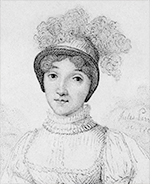 Blanchard was the first professional female aeronaut in history. She was initiated into ballooning by her husband Jean-Pierre-François Blanchard, himself a pioneer in ballooning. She created her own place in history as France’s Chief Air Minister of Ballooning during the reign of Napoleon Bonaparte.
Blanchard was the first professional female aeronaut in history. She was initiated into ballooning by her husband Jean-Pierre-François Blanchard, himself a pioneer in ballooning. She created her own place in history as France’s Chief Air Minister of Ballooning during the reign of Napoleon Bonaparte.
Her many long distance flights included crossing the Alps and traversing Italy. On numerous occasions, her ascensions reached altitudes of up to 12,000ft, which exposed her to frigid temperatures and put her at risk of passing out. Blanchard’s love of ballooning was also her undoing - she died on 6th July 1819 when her hydrogen balloon caught fire and she became entangled in the balloon’s netting. Despite her tragic ending, Blanchard has taken her place in aeronautic history.
19. Emily Warren Roebling, Engineer: 1843 - 1903
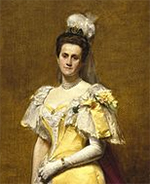 ‘The woman behind the man who built the Brooklyn Bridge’. It was not customary for a woman to accompany a man to a construction site in the late 19th century. However, when Washington A. Roebling, the Chief Engineer of the Brooklyn Bridge, fell ill, it was his wife Emily who stepped in - managing, liaising and politicking between city officials, workers, and her husband’s bedside to see the world’s first steel-wire suspension bridge to completion. She would also become the first person to cross the bridge on its completion in 1883.
‘The woman behind the man who built the Brooklyn Bridge’. It was not customary for a woman to accompany a man to a construction site in the late 19th century. However, when Washington A. Roebling, the Chief Engineer of the Brooklyn Bridge, fell ill, it was his wife Emily who stepped in - managing, liaising and politicking between city officials, workers, and her husband’s bedside to see the world’s first steel-wire suspension bridge to completion. She would also become the first person to cross the bridge on its completion in 1883.
Roebling was honoured at the bridge opening in a speech by New York Mayor, Abram Stevens Hewitt, who said that the bridge was: “… an everlasting monument to the sacrificing devotion of a woman and of her capacity for that higher education from which she has been too long disbarred.”
18. Ellen Henrietta Swallow Richards, Engineer and Chemist: 1842 - 1911
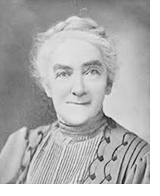 The most prominent female American chemist of the 19th century, Richards was a pioneer in sanitary engineering and a founder of home economics in the US. She also holds the distinction of being the first woman to be admitted to the Massachusetts Institute of Technology (MIT).
The most prominent female American chemist of the 19th century, Richards was a pioneer in sanitary engineering and a founder of home economics in the US. She also holds the distinction of being the first woman to be admitted to the Massachusetts Institute of Technology (MIT).
Richards volunteered her services as well as $1,000 annually to further women’s scientific education at MIT, and through her efforts, the Women’s Laboratory was established in 1876. From her days at the laboratory, she was very concerned about applying scientific principles to domestic topics - good nutrition, pure foods, proper clothing, physical fitness, sanitation, and efficient practices that would allow women more time for pursuits other than cooking and cleaning. In 1882 she published ‘The Chemistry of Cooking and Cleaning: A Manual for Housekeepers’.
17. Stephanie L. Kwolek, Chemist: 1923 - 2014
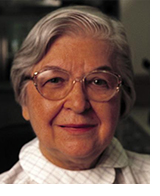 In 1965 Kwolek created the first of a family of synthetic fibres known for their exceptional strength and stiffness. The best-known member of this family is Kevlar, a material used in protective vests as well as in boats, aeroplanes, ropes, cables, and much more - in total about 200 applications.
In 1965 Kwolek created the first of a family of synthetic fibres known for their exceptional strength and stiffness. The best-known member of this family is Kevlar, a material used in protective vests as well as in boats, aeroplanes, ropes, cables, and much more - in total about 200 applications.
For her discovery, Kwolek was awarded the DuPont company's Lavoisier Medal for outstanding technical achievement. She remains the only female employee of the company to have received that honour. In 1995 she became the fourth woman to be added to the National Inventors Hall of Fame. Kwolek won numerous awards for her work in polymer chemistry, including the National Medal of Technology, the IRI Achievement Award and the Perkin Medal.
16. Barbara McClintok, Scientist and Cytogeneticist: 1902 - 1992
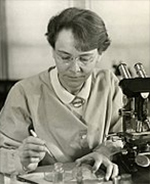 McClintock made a number of ground-breaking discoveries in genetics. She demonstrated the phenomenon of chromosomal crossover, which increases genetic variation in species. She also discovered transposition – genes moving around within chromosomes – often described as jumping genes, and showed that genes are responsible for switching the physical traits of an organism on or off.
McClintock made a number of ground-breaking discoveries in genetics. She demonstrated the phenomenon of chromosomal crossover, which increases genetic variation in species. She also discovered transposition – genes moving around within chromosomes – often described as jumping genes, and showed that genes are responsible for switching the physical traits of an organism on or off.
McClintock’s work was ahead of its time and was for many years considered too radical—or was simply ignored—by her fellow scientists. It was not until the late 1960s and 1970s, after biologists had determined that the genetic material was DNA, did members of the scientific community begin to verify her early findings. When recognition finally came, McClintock was inundated with awards and honours, most notably the 1983 Nobel Prize for Physiology or Medicine. She was the first woman to be the sole winner of this award.
15. Jocelyn Bell Burnell, Astrophysicist: 1943 -
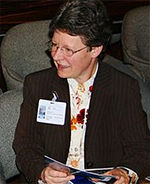 Bell Burnell is credited with the co-discovery of the first radio pulsars (a highly magnetised rotating neutron star or white dwarf that emits a beam of electromagnetic radiation), in 1967, cited by the BBC as ‘…one of the most significant scientific achievements of the 20th century’. The discovery was recognised by the award of the 1974 Nobel Prize in Physics.
Bell Burnell is credited with the co-discovery of the first radio pulsars (a highly magnetised rotating neutron star or white dwarf that emits a beam of electromagnetic radiation), in 1967, cited by the BBC as ‘…one of the most significant scientific achievements of the 20th century’. The discovery was recognised by the award of the 1974 Nobel Prize in Physics.
Bell Burnell has since become a role model for young students and female scientists throughout the world. She was appointed to CBE for services to astronomy in 1999, followed by a DBE in 2007. In September of this year she was chosen by a panel of leading scientists to receive the $3m (£2.3m) special breakthrough prize in fundamental physics for her landmark work and a lifetime of inspiring leadership in the scientific community. Bell Burnell has donated the money to help students underrepresented in physics.
14. Beulah Louise Henry, Inventor: 1887 - 1973
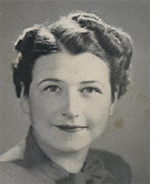 In the 1930s, Henry was given the nickname ‘Lady Edison’ for her many inventions. These include a bobbin-free sewing machine and a vacuum ice cream freezer. Though she was awarded around 49 patents over her lifetime, she has been credited with around 110 inventions in total.
In the 1930s, Henry was given the nickname ‘Lady Edison’ for her many inventions. These include a bobbin-free sewing machine and a vacuum ice cream freezer. Though she was awarded around 49 patents over her lifetime, she has been credited with around 110 inventions in total.
One of her most popular early inventions was an umbrella with a snap-on cloth cover that allowed the owner to coordinate the umbrella with clothing. The umbrella was much loved by the people and led to her appearance in ‘Scientific American’ as one of their ‘Outstanding Inventors’. She established two companies of her own where she worked on her inventions and also worked for the Nicholas Machine Works and served as a consultant to several companies that manufactured new items. She was inducted into the National Inventors Hall of Fame in 2006.
13. Chien-Shiung Wu, Experimental Physicist: 1912 - 1997
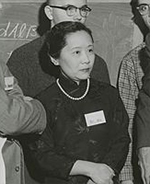 Wu made significant contributions in the field of nuclear physics. She worked on the Manhattan Project, where she helped develop the process for separating uranium metal into uranium-235 and uranium-238 isotopes by gaseous diffusion.
Wu made significant contributions in the field of nuclear physics. She worked on the Manhattan Project, where she helped develop the process for separating uranium metal into uranium-235 and uranium-238 isotopes by gaseous diffusion.
She is best known for conducting the Wu experiment, which contradicted the hypothetical law of conservation of parity. This discovery resulted in her colleagues Tsung-Dao Lee and Chen-Ning Yang winning the 1957 Nobel Prize in physics, and earned Wu the inaugural Wolf Prize in Physics in 1978. Her expertise in experimental physics evoked comparisons to Marie Curie. Her nicknames include ‘the First Lady of Physics’, ‘the Chinese Madame Curie’, and the ‘Queen of Nuclear Research’.
12. Mary Somerville, Science Writer and Polymath: 1780 - 1872
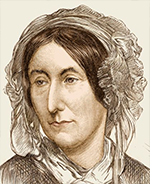 Somerville studied mathematics and astronomy, and was nominated to be jointly the first female member of the Royal Astronomical Society at the same time as Caroline Herschel.
Somerville studied mathematics and astronomy, and was nominated to be jointly the first female member of the Royal Astronomical Society at the same time as Caroline Herschel.
She published writing on the law of universal gravity, and Kelper’s law of planetary motion. Somerville also conducted experiments to explore the relationship between light and magnetism. Sir David Brewster, inventor of the kaleidoscope, wrote in 1829 that Mary Somerville was: “Certainly the most extraordinary woman in Europe - a mathematician of the very first rank with all the gentleness of a woman.”
When she died in 1872, The Morning Post declared in her obituary that ‘Whatever difficulty we might experience in the middle of the 19th century in choosing a king of science, there could be no question whatever as to the queen.’
In February 2016 she won a public competition run by Royal Bank of Scotland to decide whose face should appear on the bank's new £10 notes. The banknotes, bearing her image, were issued in the second half of 2017.
11. Hedy Lemarr, Actress and Inventor: 1914 - 2000
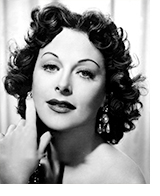 As well as being a successful film actress, Lemarr was also a keen inventor. In 1942, Lemarr and composer George Antheil patented what they called the ‘Secret Communication System’. The original idea, meant to solve the problem of enemies blocking signals from radio-controlled missiles during World War II, involved changing radio frequencies simultaneously to prevent enemies from being able to detect the messages.
As well as being a successful film actress, Lemarr was also a keen inventor. In 1942, Lemarr and composer George Antheil patented what they called the ‘Secret Communication System’. The original idea, meant to solve the problem of enemies blocking signals from radio-controlled missiles during World War II, involved changing radio frequencies simultaneously to prevent enemies from being able to detect the messages.
While the technology of the time prevented the feasibility of the idea at first, the advent of the transistor and its later downsizing made Lemarr’s idea very important to both the military and the mobile phone industry.
In 1997, Lamarr and Antheil received the Electronic Frontier Foundation Pioneer Award and the Bulbie Gnass Spirit of Achievement Bronze Award, given to individuals whose creative lifetime achievements in the arts, sciences, business, or invention fields have significantly contributed to society. And, in 2014, Lamarr and Antheil were posthumously inducted into the National Inventors Hall of Fame.
10. Laura Bassi, Physicist and Academic: 1711 - 1778
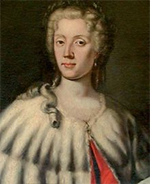 Bassi received a doctoral degree in Philosophy from the University of Bologna in May 1732. She was the first woman to earn a professorship in physics at a university, and she is recognised as the first woman in the world to be appointed a university chair in a scientific field of studies. Bassi contributed immensely to the field of science while also helping to spread the study of Newtonian mechanics through Italy.
Bassi received a doctoral degree in Philosophy from the University of Bologna in May 1732. She was the first woman to earn a professorship in physics at a university, and she is recognised as the first woman in the world to be appointed a university chair in a scientific field of studies. Bassi contributed immensely to the field of science while also helping to spread the study of Newtonian mechanics through Italy.
In 1745 she was appointed to an elite group of academics known as the Benedettini, set up by the Pope. In 1776, aged 65, she was appointed to a professorship in experimental physics at the Institute of Sciences, with her husband as teaching assistant. Two years later she died, but her influence on Italian physics, and her long career, helped break new ground for female academics.
9. Nora Stanton Barney, Civil Engineer and Architect: 1883 - 1971
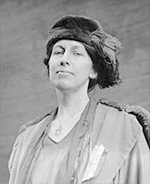 Barney was among the first women to graduate with an engineering degree in the US in 1905. The same year, she became the first woman to be admitted as a member of the American Society of Civil Engineers (ASCE). She was only allowed to be a junior member at first. And when she was denied full associate membership, she took the ASCE to court. While she lost the lawsuit reinstatement, she was posthumously given ASCE fellow status in 2015.
Barney was among the first women to graduate with an engineering degree in the US in 1905. The same year, she became the first woman to be admitted as a member of the American Society of Civil Engineers (ASCE). She was only allowed to be a junior member at first. And when she was denied full associate membership, she took the ASCE to court. While she lost the lawsuit reinstatement, she was posthumously given ASCE fellow status in 2015.
She also worked as an assistant engineer and chief draftsman at the Radley Steel Construction Company (1909 - 1912) and for several years as an assistant engineer for the New York Public Service Commission (from 1912).
8. Marie Van Bittan Brown, Inventor: 1922 - 1999
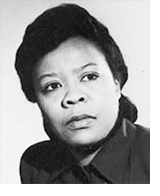 Brown and her husband, Albert, created an early closed-circuit television system to be used for home monitoring. That security system was the forerunner of all advanced home security technology in use today.
Brown and her husband, Albert, created an early closed-circuit television system to be used for home monitoring. That security system was the forerunner of all advanced home security technology in use today.
Concerned about rising crime rates in their neighnourhood, Brown and her husband developed a system where a television monitor was placed in the Browns’ bedroom, and a radio-controlled wireless system was used to feed images seen at the door back to the monitor. A two-way microphone also permitted conversation with the person at the door.
Although the system was originally intended for domestic uses, many businesses began to adopt her system due to its effectiveness. For her invention she received an award from the National Science Committee.
7. Maryam Mirzakhani, Mathematician: 1977 - 2017
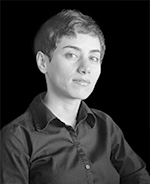 Mirzakhani was an Iranian mathematician and a professor of mathematics at Stanford University. Her research topics included Teichmüller theory, hyperbolic geometry, ergodic theory and symplectic geometry.
Mirzakhani was an Iranian mathematician and a professor of mathematics at Stanford University. Her research topics included Teichmüller theory, hyperbolic geometry, ergodic theory and symplectic geometry.
On 13th August 2014, Mirzakhani was honoured with the Fields Medal, the most prestigious award in mathematics. As such, she became both the first woman and the first Iranian to be honoured with the award. The award committee cited her work in ‘the dynamics and geometry of Riemann surfaces and their moduli spaces’.
Upon her death from breast cancer in 2017, Stanford University President Marc Tessier-Lavigne said Mirzakhani was a brilliant theorist who made enduring contributions and inspired thousands of women to pursue maths and science.
On 2nd February this year, Satellogic, a high resolution Earth observation imaging and analytics company, launched a ÑuSat type micro-satellite named in Mirzakhani’s honour.
6. Grace Hopper, Computer Scientist: 1906 - 1992
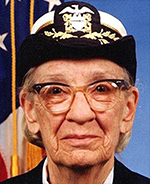 Hopper was a pioneer of computer programming who invented one of the first compiler related tools. She popularised the idea of machine independent programming languages, which led to the development of COBOL, an early high level programming language still in use today.
Hopper was a pioneer of computer programming who invented one of the first compiler related tools. She popularised the idea of machine independent programming languages, which led to the development of COBOL, an early high level programming language still in use today.
During the Second World War in 1943, Hopper obtained a leave of absence from Vassar College and was sworn into the US Navy Reserve, and was one of many women who volunteered to serve in the WAVES. Upon her retirement from the Navy in 1986 with the rank of Rear Admiral, she immediately became a senior consultant to Digital Equipment Corporation, and remained there for several years, working well into her 80s.
Hopper was awarded 40 honorary degrees from universities across the world. A college at Yale University was renamed in her honour. In 1991, she received the National Medal of Technology. On 22nd November, 2016, she was posthumously awarded the Presidential Medal of Freedom by President Barack Obama.
5. Gertrude B. Elion, Biochemist and Pharmacologist: 1918 - 1999
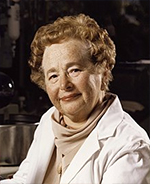 Elion developed a multitude of new drugs, using innovative research methods that would later lead to the development of the AIDS drug AZT. She developed the first immunosuppressive drug, azathioprine, used for organ transplants. She also developed the first successful anti-viral drug, acyclovir (ACV), for the treatment of Herpes infection, and an array of other new drugs that were effective against leukaemia, autoimmune disorders, urinary-tract infections, gout and malaria.
Elion developed a multitude of new drugs, using innovative research methods that would later lead to the development of the AIDS drug AZT. She developed the first immunosuppressive drug, azathioprine, used for organ transplants. She also developed the first successful anti-viral drug, acyclovir (ACV), for the treatment of Herpes infection, and an array of other new drugs that were effective against leukaemia, autoimmune disorders, urinary-tract infections, gout and malaria.
Rather than relying on trial-and-error, Elion (along with George Hitchings) used the differences in biochemistry between normal human cells and pathogens (disease-causing agents such as cancer cells, protozoa, bacteria, and viruses) to design drugs that could kill or inhibit the reproduction of particular pathogens without harming the host cells.
In 1988 Elion received the Nobel Prize in Physiology or Medicine and in 1991 she was awarded a National Medal of Science and was inducted into the National Women’s Hall of Fame.
4. Lise Meitner, Physicist: 1878 - 1968
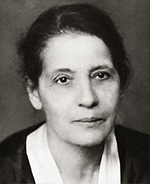 After receiving her doctorate at the University of Vienna, Meitner joined chemist Otto Hahn in researching radioactivity. During three decades of association, she was among the first to isolate the isotope protactinium-231, she studied nuclear isomerism and beta decay, and in the 1930s investigated the products of neutron bombardment of uranium.
After receiving her doctorate at the University of Vienna, Meitner joined chemist Otto Hahn in researching radioactivity. During three decades of association, she was among the first to isolate the isotope protactinium-231, she studied nuclear isomerism and beta decay, and in the 1930s investigated the products of neutron bombardment of uranium.
Meitner spent most of her scientific career in Berlin, Germany, where she was a physics professor and a department head at the Kaiser Wilhelm Institute. She was the first woman to become a full professor of physics in Germany. She lost these positions in the 1930s because of the anti-Jewish Nuremberg Laws of Nazi Germany, and in 1938 she fled to Sweden, where she lived for many years, ultimately becoming a Swedish citizen.
Meitner received many awards and honours late in her life, but she did not share in the 1944 Nobel Prize in Chemistry for nuclear fission that was awarded exclusively to Hahn, her long-time collaborator. In the 1990s, the records of the committee that decided on that prize were opened. Based on this information, several scientists and journalists have called her exclusion ‘unjust’, and Meitner has received many posthumous honours, including naming chemical element 109 Meitnerium in 1992.

3. Ada Lovelace, Mathematician and Writer: 1815 - 1852
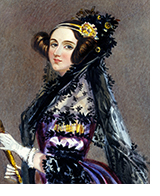 Lovelace is chiefly known for her work on Charles Babbage's proposed mechanical general purpose computer, the Analytical Engine. She was the first to recognise that the machine had applications beyond pure calculation, and published the first algorithm intended to be carried out by such a machine. As a result, she is sometimes regarded as the first to recognise the full potential of a ‘computing machine’ and the first computer programmer.
Lovelace is chiefly known for her work on Charles Babbage's proposed mechanical general purpose computer, the Analytical Engine. She was the first to recognise that the machine had applications beyond pure calculation, and published the first algorithm intended to be carried out by such a machine. As a result, she is sometimes regarded as the first to recognise the full potential of a ‘computing machine’ and the first computer programmer.
In 1953, more than a century after her death, Lovelace’s notes on Babbage’s Analytical Engine were republished as an appendix to B.V. Bowden’s ‘Faster than Thought: A Symposium on Digital Computing Machines’. The engine has now been recognised as an early model for a computer and her notes as a description of a computer and software.
The computer language Ada, created on behalf of the United States Department of Defense, was named after Lovelace. The Department of Defense Military Standard for the language, MIL-STD-1815, was given the number of the year of her birth.
In 1981, the Association for Women in Computing inaugurated its Ada Lovelace Award. Since 1998 the British Computer Society (BCS) has awarded the Lovelace Medal, and in 2008 initiated an annual competition for women students.
Ada Lovelace Day is an annual event celebrated on the second Tuesday of October, whose goal is to ‘... raise the profile of women in science, technology, engineering, and maths,’ and to ‘create new role models for girls and women’ in these fields.
Lovelace is also the inspiration and influence for the Ada Developers Academy in Seattle, Washington. The academy is a non-profit that seeks to increase diversity in tech by training women, trans and non-binary people to be software engineers.
2. Rosalind Franklin, Chemist and X-ray Crystallographer: 1920 - 1958
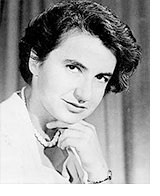 Franklin studied chemistry at Cambridge University from 1938. Upon graduating she worked at the Laboratoire Central des Services Chimiques de l'Etat in Paris, where she learned X-ray diffraction techniques. She was then offered a three-year research scholarship at King's College in London, with the brief of setting up and improving the X-ray crystallography unit at the College.
Franklin studied chemistry at Cambridge University from 1938. Upon graduating she worked at the Laboratoire Central des Services Chimiques de l'Etat in Paris, where she learned X-ray diffraction techniques. She was then offered a three-year research scholarship at King's College in London, with the brief of setting up and improving the X-ray crystallography unit at the College.
Franklin’s research contributed enormously to the understanding of the molecular structures of DNA (deoxyribonucleic acid), RNA (ribonucleic acid), viruses, coal, and graphite. Although her works on coal and viruses were appreciated in her lifetime, her contributions to the discovery of the structure of DNA were largely recognised posthumously.
Franklin is best known for her work on the X-ray diffraction images of DNA, particularly Photo 51, which led to the discovery of the DNA double helix for which James Watson, Francis Crick and Maurice Wilkins shared the Nobel Prize in Physiology or Medicine in 1962. Watson suggested that Franklin would have ideally been awarded a Nobel Prize in Chemistry, along with Wilkins, but, although there was not yet a rule against posthumous awards, the Nobel Committee generally does not make posthumous nominations.
In 2014, the Rosalind Franklin Award for Leadership in Industrial Biotechnology was established by Biotechnology Industry Organization in collaboration with the Rosalind Franklin Society, for an outstanding woman in the field of industrial biotechnology and bioprocessing.
1. Marie Curie, Physicist and Chemist: 1867 - 1934
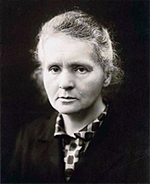 Curie was a Polish-born physicist and chemist and one of the most famous scientists of her time. Together with her husband Pierre, she was awarded the Nobel Prize in 1903 with her husband (the first woman to receive the award), and she went on to win another in 1911 (the first person to win the award twice) – she is also the only woman to win a Nobel Prize in two fields, and the only person to win in multiple sciences. Her achievements include the development of the theory of radioactivity (a term that she coined).
Curie was a Polish-born physicist and chemist and one of the most famous scientists of her time. Together with her husband Pierre, she was awarded the Nobel Prize in 1903 with her husband (the first woman to receive the award), and she went on to win another in 1911 (the first person to win the award twice) – she is also the only woman to win a Nobel Prize in two fields, and the only person to win in multiple sciences. Her achievements include the development of the theory of radioactivity (a term that she coined).
Marie Sklodowska was born in Warsaw on 7th November 1867, the daughter of a teacher. In 1891, she went to Paris to study physics and mathematics at the Sorbonne where she met Pierre Curie, professor of the School of Physics. They were married in 1895.
The Curies worked together investigating radioactivity, building on the work of the German physicist Roentgen and the French physicist Becquerel. In July 1898, the Curies announced the discovery of a new chemical element, Polonium. At the end of the year, they announced the discovery of another, Radium.
Pierre's life was cut short in 1906 when he was knocked down and killed by a carriage. Marie took over his teaching post, becoming the first woman to teach at the Sorbonne, and devoted herself to continuing the work that they had begun together.
The Curie's research was crucial in the development of X-rays in surgery. During World War I Curie helped to equip ambulances with X-ray equipment, which she herself drove to the front lines. The International Red Cross made her head of its radiological service and she held training courses for medical orderlies and doctors in the new techniques.
She founded the Curie Institutes in Paris and in Warsaw, which remain major centres of medical research today.
Curie's contribution to shaping the world of the 20th and 21st centuries was highlighted by Cornell University professor L. Pearce Williams, who observed: “The result of the Curies’ work was epoch-making. Radium’s radioactivity was so great that it could not be ignored. It seemed to contradict the principle of the conservation of energy and therefore forced a reconsideration of the foundations of physics.
“On the experimental level the discovery of radium provided men like Ernest Rutherford with sources of radioactivity with which they could probe the structure of the atom. As a result of Rutherford's experiments with alpha radiation, the nuclear atom was first postulated. In medicine, the radioactivity of radium appeared to offer a means by which cancer could be successfully attacked.”
Despite her success, Curie continued to face great opposition from male scientists in France, and she never received significant financial benefits from her work. By the late 1920s her health was beginning to deteriorate. She died on 4th July 1934 from leukaemia, caused by exposure to high energy radiation from her research.
Curie has become an icon in the scientific world and has received tributes from across the globe. In a 2009 poll carried out by New Scientist, she was voted the ‘most inspirational woman in science’. Curie received 25.1% of all votes cast, nearly twice as many as second-place Rosalind Franklin.
Marie Curie also give her name to the Marie Curie Cancer Care charity, which was founded in 1948.









